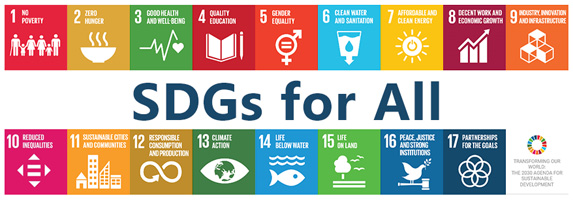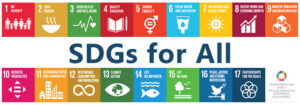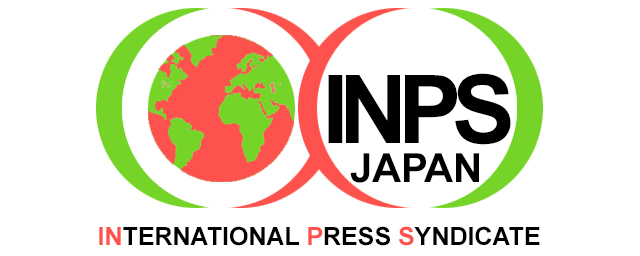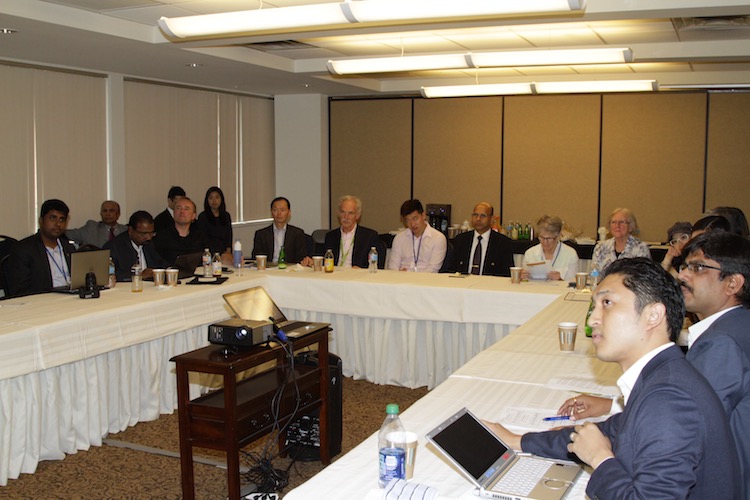By Shanta Rao
UNITED NATIONS (IDN) – Speaking of the UN’s post-2015 development agenda, the President of the UN General Assembly Peter Thomson of Fiji last year zeroed in on a home truth: very few human beings in the world, he said, know anything about the UN’s 17 Sustainable Development Goals (SDGs).
So, he argued, SDGs should be part of every school curriculum. The UN will make a big push for it and youth should be taught about the importance of SDGs in the development agenda, he told reporters.
“If every school curriculum in the world incorporates the Sustainable Development Goals, every school teaches them, and every young person on the planet is made aware of them as rights and responsibilities, the world will stand a very good chance of attaining the Goals by 2030,” he declared. |JAPANESE
In November 2016, Thomson wrote a letter to 193 Heads of State and Government to emphasize the importance of teaching children and young people about the SDGs. “Youth will be the inheritors of the success or failure of the Sustainable Development Goals,” he wrote in his letter.
Long before that declaration, the Tokyo-based Soka Gakkai International (SGI), a lay Buddhist organization was perhaps one of the few institutions in the world which has placed heavy emphasis on the role of students, as it focuses on Goal 4 of the SDGs: ensure inclusive and equitable quality education and promote lifelong learning opportunities for all.
And at a SGI panel discussion held July 12 at the Sri Lanka Mission to the UN — and on the sidelines of a High Level Political Forum (HLPF) on Sustainable Development the subject under discussion was: “Can Non-Formal Education Be Measured?. A Case Study on the Use of Exhibitions in School Settings.”
The SGI event was partnered by Earth Charter International (ECI) and the Centre for Environment Education (CEE).
In a message to the delegates and participants at the event, SGI President Daisaku Ikeda said one of the noteworthy aspects of the SDGs is that they are backed by a vision and determination to leave no one behind.
To realize this vision, he pointed out, “it is vital that each of us deepen our understanding of present realities – along with the recognition that we have/no choice but to live together on this planet with our fellow human beings.”
“A powerful momentum for transformation can arise and spread from the actions we take in our immediate environment, our respective communities. I firmly believe that the driving force behind this vision will be education and learning; in particular, I am referring to the value of education for sustainable development and global citizenship,” he declared.
Over the years, President Ikeda has continuously stressed the importance of education in promoting sustainable development.
On the occasion of Rio+10, The World Summit on Sustainable Development in Johannesburg 2002, he proposed three goals in relation to education for sustainable development: 1) To learn and deepen awareness of environmental issues and realities, 2) To reflect on the modes of living, renewing these toward sustainability, 3) To empower people to take concrete action to resolve the challenges they face.
Based on these goals, the SGI and Earth Charter International have jointly produced the educational exhibition “Seeds of Hope: Visions of Sustainability, steps toward change.”
To date, this exhibition has been successfully showcased in 36 countries and territories around the world and helped create a space for young people and civil society actors to engage in non-formal education and learning for sustainable development.
The project, based in India, was intended to measure the impact of non-formal education through using an exhibition. Eighteen different schools from three different Indian cities were brought into the project.
One group of students was presented with only the exhibition while another group was provided with both the exhibition and some related activities.
Surveys were conducted both before and after the project to evaluate what has been learned among the students.
The exhibition used for the project was “Seeds of Hope: Visions of sustainability, steps toward change” created by SGI and the Earth Charter International.
The results of the survey were presented to delegates by Dr Pramod Kumar Sharma, Programme Director at the Ahmedabad-based Centre for Environment Education (CEE). He is also a visiting scholar at the University of Michigan.
Asked about his role in the joint project, Dr Sharma told IDN that CEE was responsible for conducting the study. “I was involved in preparing the research design, preparation of the tool to collect data and analysis of the report along with other colleagues of the Centre.”
Asked to define “non formal education”, he said: “In this context, the non-formal is the approach and material used for educating children on the sustainability issue and motivate them to change.”
On the proposal made by the President of the UN General Assembly, he said It might help to have SDGs in the school curriculum and educate children on the SDGs – “why, what and how they will lead to sustainability”.
“Most important is to make them relate it to their daily life and how they are connected. As citizens now and in future, we need to make their involvement in SDG tangible, take it beyond UN agreement between countries,” he declared.
According to the UN, more than 750 million adults are illiterate, including 115 million young people. Two thirds are female. Some 250 million children of primary school age lack basic literacy skills and 124 million children and adolescents receive no schooling at all.
“These obstacles to sustainable development can and must be overcome by developing and implementing the right policies, backed up by commitment and resources.”
“We need to ensure that those out of school get access to quality learning opportunities, we need to improve the quality of schooling and we need to promote adult education and learning,” the UN says.
And by teaching the SDGs, progress is made towards the implementation of SDG 4.7 which states: “By 2030, ensure that all learners acquire the knowledge and skills needed to promote sustainable development, including, among others, through education for sustainable development and sustainable lifestyles, human rights, gender equality, promotion of a culture of peace and non-violence, global citizenship and appreciation of cultural diversity and of culture’s contribution to sustainable development.”
Meanwhile, in November of 2016, the SGI and the Earth Charter International jointly developed and launched a new non-formal education tool called “Mapting,” described as a mobile application designed to promote interest and engagement in the SDGs.
Mapting is a mobile participatory app that enables users to take photos or videos of activities related to SDGs and share these on a world map.
By sharing information, as President Ikeda pointed out, users can see and sense more directly the ways in which the SDGs are relevant in their lives. The Mapting experience will enable them to see the world through the lens of their own community, and vice versa.
“I believe that such forms of direct engagement with the SDGs can play an extremely significant role in raising public awareness and inspiring increased activism. SGI hopes to take full advantage of our grassroots network across local communities and to work with other like-minded groups and institutions to further advance non-formal education in the construction of a sustainable global community,” he added. [IDN-InDepthNews – 18 July 2017]
Photo credit: Soka Gakkai




